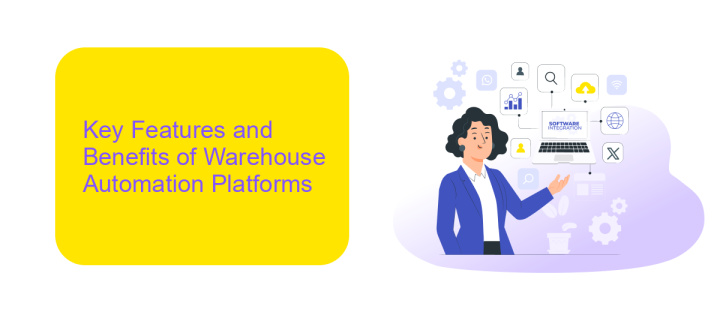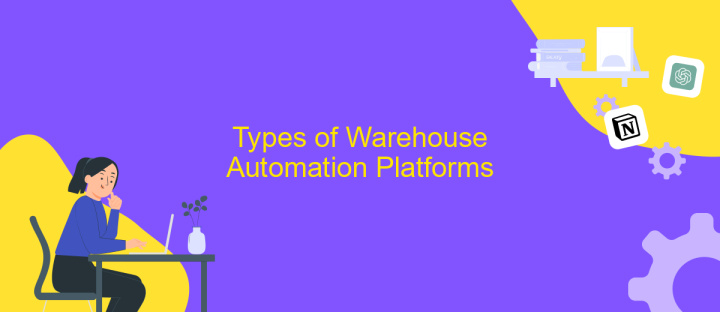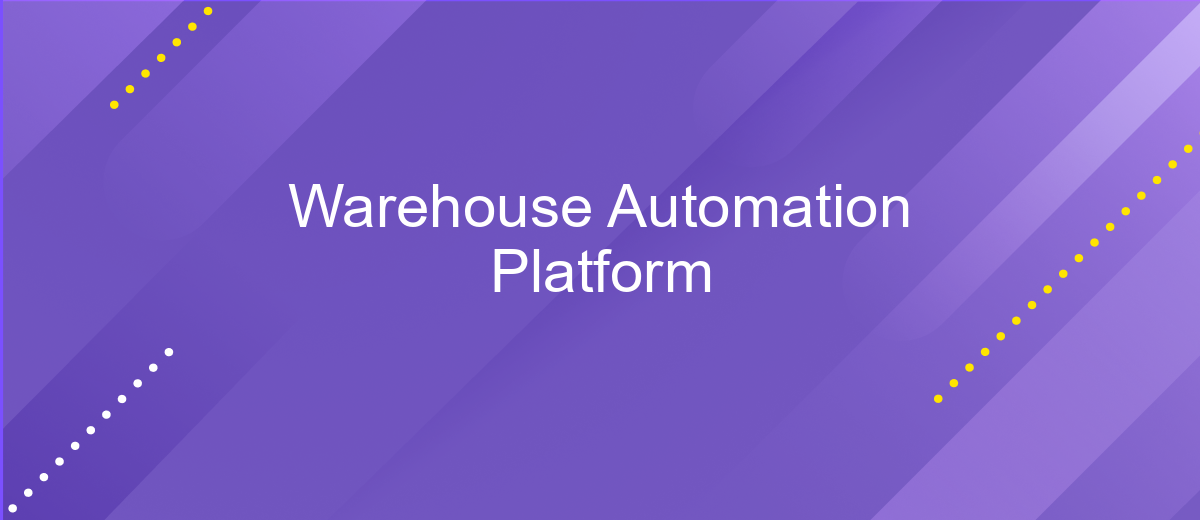Warehouse Automation Platform
In today's rapidly evolving industrial landscape, warehouse automation platforms are revolutionizing the way businesses manage inventory and streamline operations. By integrating cutting-edge technologies such as robotics, AI, and IoT, these platforms enhance efficiency, reduce human error, and optimize resource allocation. As companies strive to meet increasing consumer demands, embracing warehouse automation becomes essential for maintaining competitiveness and achieving sustainable growth in the global market.
Introduction to Warehouse Automation Platforms
Warehouse automation platforms are revolutionizing the logistics industry by streamlining operations, enhancing efficiency, and reducing human error. These platforms integrate advanced technologies such as robotics, artificial intelligence, and the Internet of Things (IoT) to automate various warehouse tasks. From inventory management to order fulfillment, automation solutions are transforming traditional warehouses into smart, connected facilities.
- Improved accuracy in inventory tracking and management
- Increased speed and efficiency in order processing
- Enhanced safety and reduced risk of workplace injuries
- Cost savings through reduced labor expenses and optimized resource use
- Scalability to accommodate growing business needs
As businesses strive to meet the demands of a fast-paced market, adopting warehouse automation platforms becomes a strategic imperative. These platforms not only enhance operational capabilities but also provide a competitive edge by enabling faster delivery times and improved customer satisfaction. As technology continues to evolve, the future of warehouse automation promises even greater advancements, making it an essential component of modern supply chain management.
Key Features and Benefits of Warehouse Automation Platforms

Warehouse automation platforms offer a range of key features designed to enhance operational efficiency and accuracy in logistics management. These platforms typically include automated storage and retrieval systems, which streamline inventory management by reducing manual handling and human error. Advanced robotics and conveyor systems facilitate faster and more precise movement of goods, optimizing the flow of products throughout the warehouse. Additionally, the integration of AI-driven analytics provides real-time insights, enabling better decision-making and predictive maintenance.
The benefits of implementing warehouse automation platforms are substantial. They significantly reduce labor costs and increase productivity by automating repetitive tasks. Enhanced accuracy in order fulfillment leads to improved customer satisfaction and reduced returns. The scalability of these platforms allows businesses to adapt to changing demands with ease. For seamless integration with existing systems, services like ApiX-Drive can be utilized to automate data transfer and communication between various software, ensuring a cohesive operational environment. Ultimately, these platforms empower businesses to maintain a competitive edge in the rapidly evolving logistics landscape.
Types of Warehouse Automation Platforms

Warehouse automation platforms are revolutionizing the logistics industry by streamlining operations and increasing efficiency. These platforms utilize advanced technologies to automate various tasks within a warehouse, reducing human error and operational costs. The selection of an appropriate automation platform depends on the specific needs of the warehouse, such as the type of goods handled and the volume of operations.
- Automated Storage and Retrieval Systems (AS/RS): These systems use automated equipment to store and retrieve goods, enhancing inventory management and space utilization.
- Conveyor Systems: These platforms transport products throughout the warehouse, facilitating faster and more organized movement of goods.
- Robotic Picking Systems: Robots are employed to pick items from shelves, improving picking accuracy and speed.
- Warehouse Management Systems (WMS): Software solutions that manage and optimize daily warehouse operations, including inventory tracking and order fulfillment.
- Automated Guided Vehicles (AGVs): These are mobile robots that transport materials within the warehouse autonomously.
Each type of warehouse automation platform offers unique benefits, and their integration can significantly enhance a warehouse's operational efficiency. Businesses must carefully evaluate their needs and choose the appropriate combination of technologies to achieve optimal results.
Choosing the Right Warehouse Automation Platform

Choosing the right warehouse automation platform is a critical decision that can significantly impact your operational efficiency and bottom line. With numerous options available, it's essential to evaluate your specific needs and objectives. Consider the size of your warehouse, the complexity of your operations, and your budget constraints.
Start by assessing the scalability and flexibility of the platform. A solution that can grow with your business and adapt to changing demands will provide long-term value. Additionally, ensure the platform integrates seamlessly with your existing systems and technologies to avoid costly disruptions.
- Evaluate the platform's ease of use and training requirements for your staff.
- Consider the level of customer support and service provided by the vendor.
- Examine the platform's data analytics capabilities to enhance decision-making.
- Check for compliance with industry standards and regulations.
Ultimately, the right warehouse automation platform should align with your strategic goals and enhance your competitive edge. By carefully considering these factors, you can make an informed decision that supports your warehouse operations now and in the future.
Future Trends in Warehouse Automation Platforms
As the landscape of warehouse automation continues to evolve, several key trends are expected to shape its future. One significant trend is the integration of artificial intelligence and machine learning to enhance operational efficiency. These technologies enable predictive analytics, allowing warehouses to optimize inventory management and reduce downtime. Additionally, the adoption of autonomous vehicles and drones for material handling and delivery is set to revolutionize logistics, offering faster and more accurate order fulfillment.
Another emerging trend is the increasing importance of seamless integration between different systems and platforms. Services like ApiX-Drive facilitate this by providing efficient solutions for automating data exchange between various applications, ensuring smooth operations across the supply chain. Furthermore, the rise of IoT devices in warehouses is expected to improve real-time tracking and monitoring, leading to more informed decision-making. As these trends converge, the future of warehouse automation platforms promises to be more interconnected, intelligent, and efficient, ultimately transforming the way businesses manage their logistics and supply chains.
FAQ
What is a Warehouse Automation Platform?
How can a Warehouse Automation Platform benefit my business?
What types of technologies are used in Warehouse Automation?
How do I integrate a Warehouse Automation Platform with my existing systems?
Is it necessary to automate all processes in a warehouse?
Time is the most valuable resource in today's business realities. By eliminating the routine from work processes, you will get more opportunities to implement the most daring plans and ideas. Choose – you can continue to waste time, money and nerves on inefficient solutions, or you can use ApiX-Drive, automating work processes and achieving results with minimal investment of money, effort and human resources.

